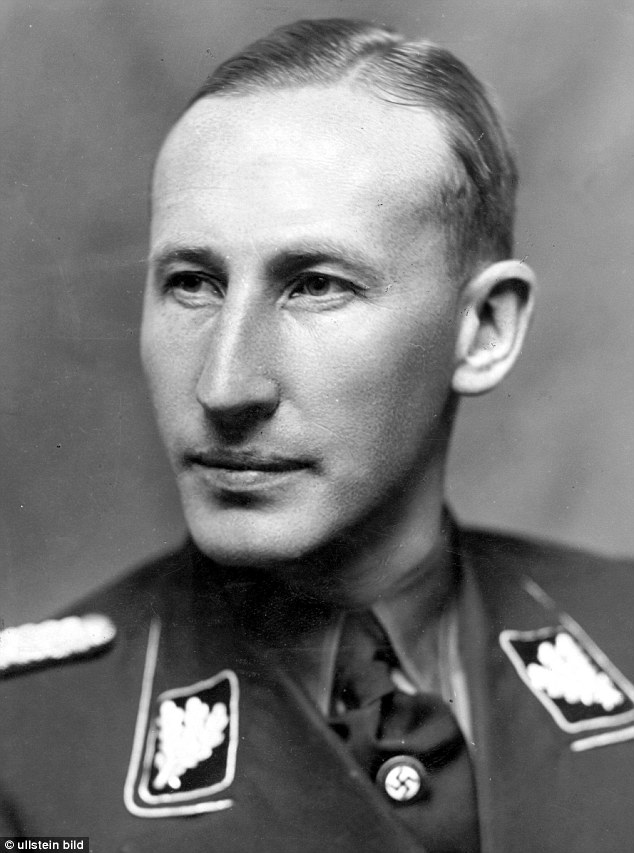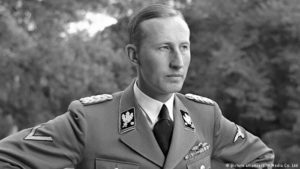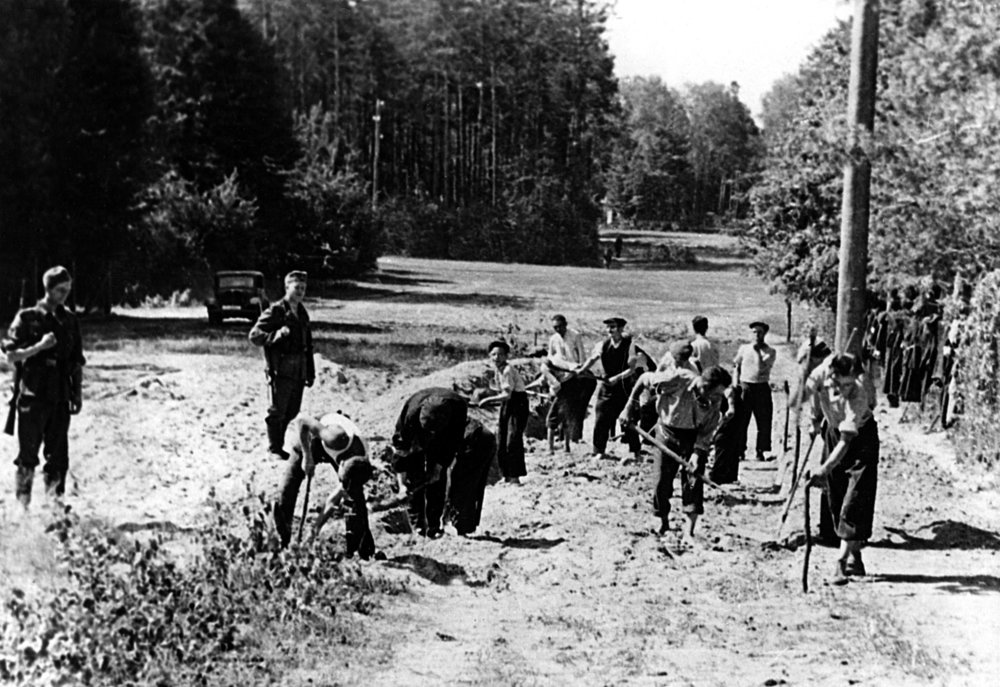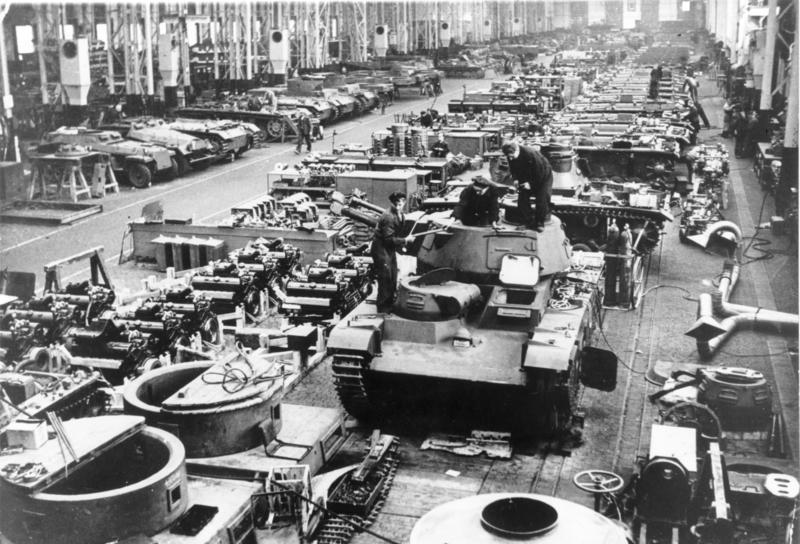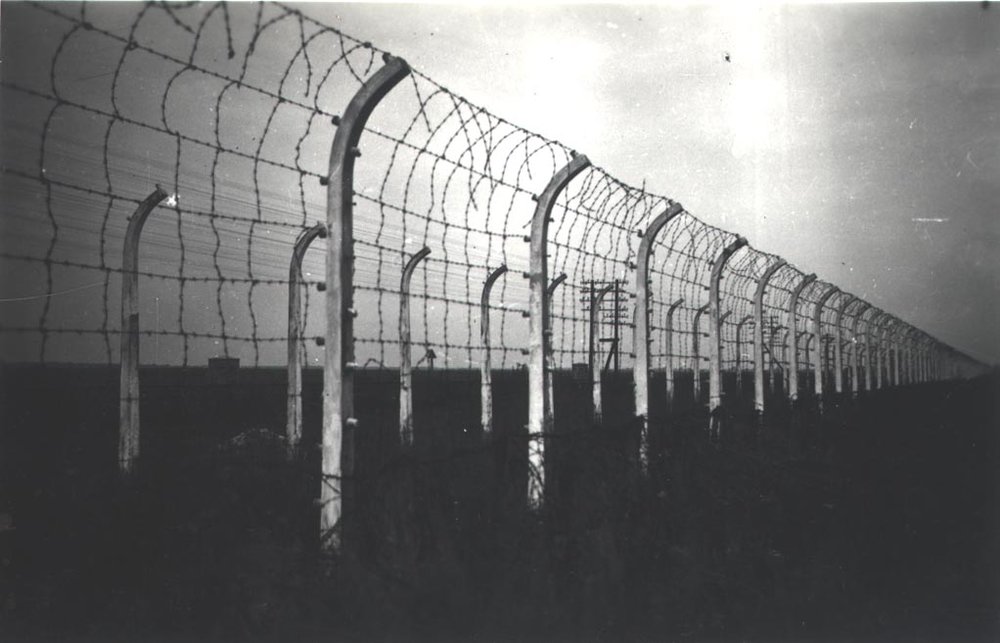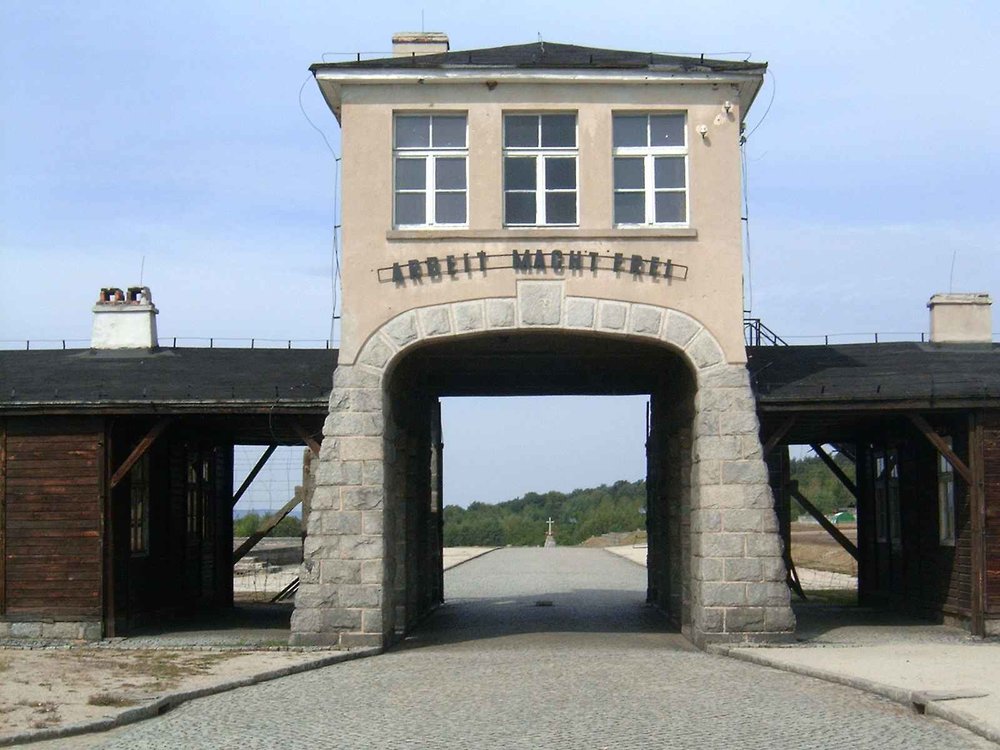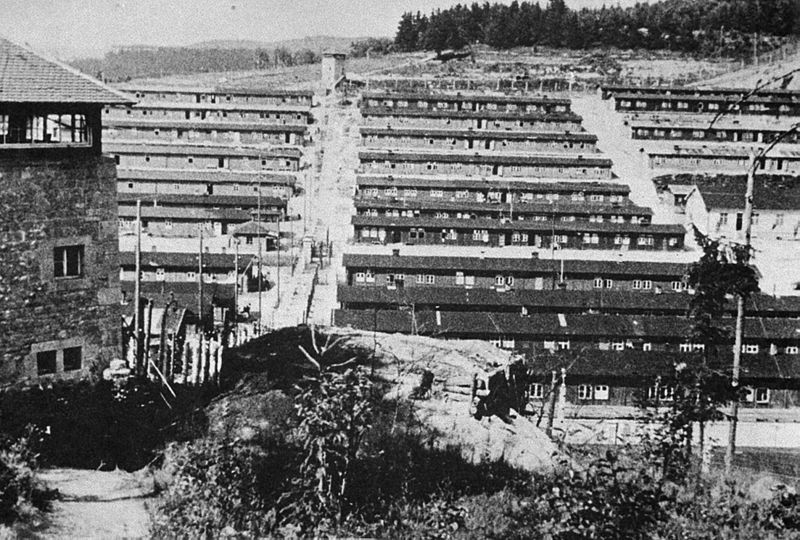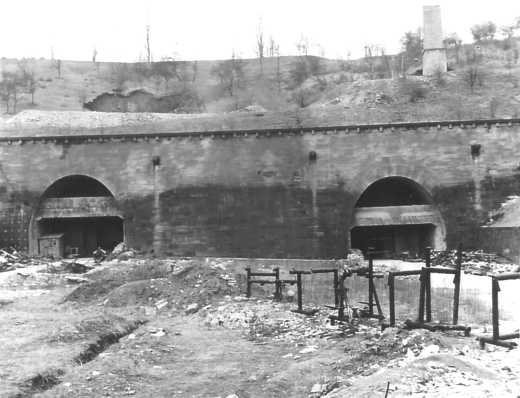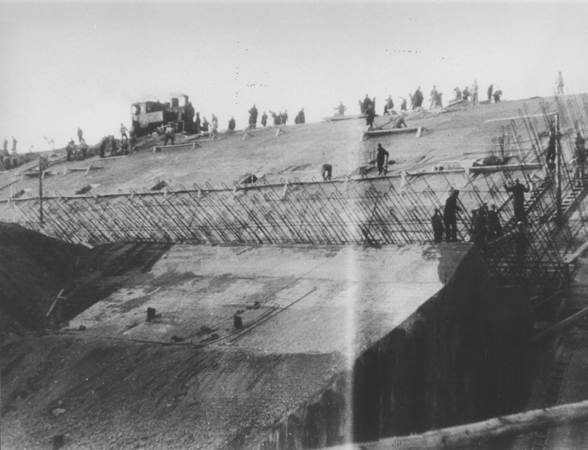You have may have heard of the Final Solution in the context of the Holocaust. It was the Wannsee Conference where the final solution was created and discussed.
On the 20th of January 1942, 15 high-ranking Nazi Party leaders gathered alongside German government officials in a villa in a suburb of Wannsee based in Berlin. Here, they discussed and put together a plan to implement what they called the “final solution to the Jewish question.”
The Goal of the Wannsee Conference
The “Final Solution” was the code name by the Nazis for the systematic and deliberate destruction of the Jewish population. It was meant to apply to ‘all Jews in reach’ essentially meaning European Jews as a priority, however, it was not restricted to Europe once they had completed their aims within the continent.
At some time in 1941 (unclear as to actually when), Adolf Hitler is said to have authorised this European-wide scheme for genocide targeted the Jewish population. However, it was Reinhard Heydrich (below) who convened the Wannsee Conference.
The meeting took place in a large, grand mansion (above) which Heydrich decided would be his residence one day.
Conspiracy The Film
The Wannasee Conference was remade into a movie known as “Conspiracy” which included Colin Firth and Kenneth Branagh:
The Two Main Aims of The Wannasee Conference
- Inform the party about the final solution and secure support from the government to carry it out
- To make clear that Hitler had tasked Heydrich and the Reich Main Security Office (RSHA) to coordinate the operation.
According to records, there was not much discussion as to whether such a policy should be undertaken. The Final Solution had already been agreed and the conference was more or less to give an update or overview of how it would be coordinated. There was no objection and the meeting ran smoothly, lasting only 90 minutes.
Coordinating the Final Solution
By the time of the Wannsee Conference in 1942, most participants were actually aware that the Nazi regime had committed mass murder and was continuing to do so in German-occupied areas of the Soviet Union and in Serbia.
Some attendees were told about the Einsatzgruppen (SS Death Squad), which were already murdering Jews in occupied territory.Up to this point, around 1.2 million Jews had already been killed in the Soviet Union in mass graves.
Others were aware of the units of the German army, the SS and police that were ordered to kill Jews as they saw fit. Therefore, when the Final Solution was presented by Heydrich it was already common knowledge to the Nazi party and subsequently, not one member of the congregation was said to have objected to the murderous policy.
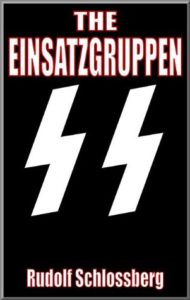
It was indicated by Heydrich that an estimated 11 million European Jews would perish as a result of this policy known as the Final Solution. When speaking about this figure, he included not only Jews which were based in Nazi-controlled mainland Europe but also the United Kingdom and neutral countries such as Switzerland, Ireland, Sweden, Spain, Portugal and European Turkey.
At the conference, Heydrich announced:
“During the course of the Final Solution, the Jews will be deployed under appropriate supervision at a suitable form of labour deployment in the East. In large labour columns, separated by gender, able-bodied Jews will be brought to those regions to build roads, whereby a large number will doubtlessly be lost through natural reduction. Any final remnant that survives will doubtless consist of the elements most capable of resistance. They must be dealt with appropriately, since, representing the fruit of natural selection, they are to be regarded as the core of a new Jewish revival.”
Things Discussed at The Wannasee Conference
Transportation of Jews: As had already been coordinated, the Jewish populations could be forced into small ghettos, which were small suburbs. In most cases, all the people in these areas would be removed and Jews were put in. In a Czech town, a suburb which previously had a population of 5,000 locals were removed and 50,000 Jews were forced into the small area. It was overcrowded. From the ghettos, the Jewish could be transported to concentrations, labour or death camps.
Sterilisation over extermination: Prior to The Final Solution, there were conversations about a forced sterilisation of all the Jewish people so that the race would eventually ‘die out.’ This idea was later replaced with extermination, despite mentions from a Nazi lawyer, Wilhelm Stuckart, who was present at the event.
Who is defined a Jew? A key point of conversation was who is regarded as a Jew – which is typically someone who has a maternal grandmother that is Jewish. According to the conversations, those Jewish on their father or grandfather’s side may be spared provided that they do not look Jewish or follow any traditions. Officers were also required to make a judgement call on an ad-hoc basis.
Similar considerations were made for those married to Jews and those with Jewish grandparents known as mischlings. These people were exempt provided they did not practice any form of Judaism or had been personally exempted by a Nazi official.
Some leniency may be given to Jews that served in the first World War (there were 12,000) and Jewish celebrities who sometimes appeared in Nazi propaganda showing that the Jewish people were being treated fine.
Cyclone Z: Conversations were made about moving away from firing squads and using gas chambers in concentration camps. Rat poision called Cyclone Z would be the poison of choice.
The Hunger Plan: Not related to the Jewish population, the Nazis discussed The Hunger Plan as an attempt to move food being sent to Eastern Europe and the Soviet Union and instead keeping the food for German mouths, with the intention that many Soviets would die from hunger. This idea was brought to fruition and starved 4.2million Soviets.
Disabled/Elderly: There was a discussion on to treat the general disabled public and elderly Jews. There were a total of 275,000 disabled people (not necessarily Jewish) that were killed in gas chambers by the Nazis known as ‘euthanasia centres,’
Who Attended The Wannasee Conference?
| SS-Obergruppenführer(General of the branch) Reinhard Heydrich |  |
Chief of the RSHA Deputy Reich Protector of Bohemia and Moravia Presiding |
Schutzstaffel (SS) | Reichsführer-SS (Reich Leader SS) Heinrich Himmler |
|---|---|---|---|---|
| SS-Gruppenführer (Major-General) Otto Hofmann |  |
Head of the SS Race and Settlement Main Office (RuSHA) | Schutzstaffel (SS) | Reichsführer-SS Heinrich Himmler |
| SS-Gruppenführer (Major-General) Heinrich Müller | Chief of Amt IV (Gestapo) | Reich Main Security Office (RSHA), Schutzstaffel | Chief of the RSHA SS-Obergruppenführer Reinhard Heydrich | |
| SS-Oberführer (Senior Colonel) Dr. Karl Eberhard Schöngarth |  |
Commander of the SiPo and the SD in the General Government | SiPo and SD, RSHA, Schutzstaffel | Chief of the RSHA SS-Obergruppenführer Reinhard Heydrich |
| SS-Oberführer (Senior Colonel) Dr. Gerhard Klopfer |  |
Permanent Secretary | Nazi Party Chancellery | Chief of the Party Chancellery Martin Bormann |
| SS-Obersturmbannführer(Lieutenant Colonel) Adolf Eichmann |  |
Head of Referat IV B4 of the Gestapo Recording secretary |
Gestapo, RSHA, Schutzstaffel | Chief of Amt IV SS-Gruppenführer Heinrich Müller |
| SS-Sturmbannführer (Major) Dr. Rudolf Lange | Commander of the SiPo and the SD for Latvia; Deputy Commander of the SiPo and the SD for the RKO Head of Einsatzkommando 2 |
SiPo and SD, RSHA, Schutzstaffel | SS-Brigadeführer (Brigadier General) and Generalmajor der Polizei (Major-General of Police) Dr. Franz Walter Stahlecker | |
| Dr. Georg Leibbrandt |  |
Reichsamtleiter (Reich Head Office) | Reich Ministry for the Occupied Eastern Territories | Reich Minister for the Occupied Eastern Territories Dr. Alfred Rosenberg |
| Dr. Alfred Meyer |  |
Gauleiter (Regional Party Leader) State Secretary and Deputy Reich Minister |
Reich Ministry for the Occupied Eastern Territories | Reich Minister for the Occupied Eastern Territories Dr. Alfred Rosenberg |
| Dr. Josef Bühler |  |
State Secretary | General Government (Polish Occupation Authority) |
Governor-General Dr. Hans Frank |
| Dr. Roland Freisler |  |
State Secretary | Reich Ministry of Justice | Reich Minister of Justice Dr. Franz Schlegelberger |
| SS-Brigadeführer (Brigadier General) Dr. Wilhelm Stuckart |  |
State Secretary | Reich Interior Ministry | Reich Minister of the Interior Dr. Wilhelm Frick |
| SS-Oberführer (Senior Colonel) Erich Neumann |  |
State Secretary | Office of the Plenipotentiary for the Four Year Plan | Plenipotentiary of the Four Year Plan Hermann Göring |
| Friedrich Wilhelm Kritzinger |  |
Permanent Secretary | Reich Chancellery | Reich Minister and head of the Reich Chancellery SS-Obergruppenführer Dr. Hans Lammers |
| Martin Luther |  |
Under-Secretary |

